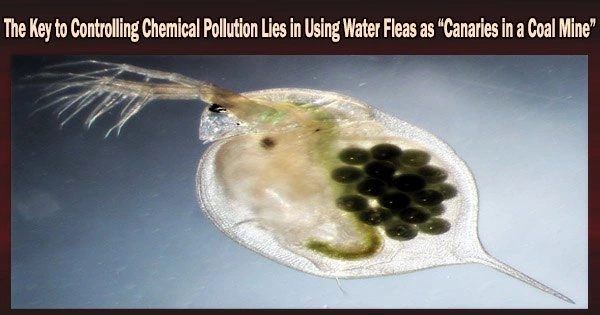Water fleas, also known as Daphnia, are small aquatic crustaceans that are often used as indicator species in ecotoxicology studies. They are considered to be “canaries in a coal mine” because they are sensitive to changes in their environment, including chemical pollution. It could provide an important ‘early warning system’ for chemical pollution in our lakes and rivers.
Additionally, Daphnia may function as a bioremediation agent to assist lessen risks where pollution prevention has failed.
In order to identify the effects of ambient chemical mixtures of the kind and concentration typically found in the environment on the biology of living organisms, researchers, under the direction of the University of Birmingham, have developed a new framework using high throughput ‘omics’ technologies.
The method makes use of Daphnia to comprehend which compounds and how they can harm other species. All species, including humans, share genes that control how they react to environmental changes, such as being exposed to pollutants, making it conceivable for this to happen.
The findings, which were published in Environmental Science and Technology, provide a much-needed advancement in the evaluation and mitigation of both current and emerging dangers from chemical pollution. The research may significantly improve how chemicals are regulated.
However, the safety of chemicals is now evaluated using antiquated methods, testing one chemical at a time and focusing separately on the threats to humans and to the environment. Many modern ailments, such as cancer and autoimmune diseases, can be connected to chemical pollution. A novel approach is urgently needed because there are at least 235,000 individual chemicals and 125,000 unregulated chemical mixtures in the environment.
Even while Daphnia have long been acknowledged as a “sentinel species,” used to discover and regulate dangerous chemical exposure limits, the recently released framework greatly broadens and improves their function. It enables Daphnia to identify potentially dangerous compounds and identify bioactive components within ambient chemical mixtures.
We need better diagnosis of the impact of chemicals on wildlife and humans but also when chemicals have entered the environment we need a sustainable remediation of their impact. Daphnia is a tiny crustacean the size of a grain of rice and are often-overlooked. Yet they are super abundant and can revolutionise the way we assess and mitigate chemical pollution sustainably. This will have positive effects on human health, helping to prevent illnesses associated with chemical pollution.
Professor Luisa Orsini
The team measures the toxicity in Daphnia and makes predictions about how it would affect other species based on the understanding that all creatures descended from a common ancestor. According to this model, Daphnia serves as a toxicity early warning system, acting like a canary in a coal mine.
The team also demonstrates how naturally adapted Daphnia strains to chemical pollution can be utilized as “removal agents” to remove toxins from the water via bioaccumulation, enhancing environmental health protection in a sustainable manner.
The effort is crucial since wastewater treatment does not get rid of the chemicals created in home, industrial, and agricultural activities; instead, they end up in our waterways. From there, they build up through the food chain and eventually end up as food and water on our tables.
The new framework involved the University of Birmingham, working in partnership with colleagues at Friends of the Muskoka Watershed, in Canada, China Jiliang University and the Alan Turing Institute.
Professor Luisa Orsini, senior-author on the paper, said: “We need better diagnosis of the impact of chemicals on wildlife and humans but also when chemicals have entered the environment we need a sustainable remediation of their impact. Daphnia is a tiny crustacean the size of a grain of rice and are often-overlooked. Yet they are super abundant and can revolutionise the way we assess and mitigate chemical pollution sustainably. This will have positive effects on human health, helping to prevent illnesses associated with chemical pollution.”
Dr. Li, corresponding author on the paper, said: “The case study that we report in the paper shows how using machine learning we can identify bioactive pollutants within ambient chemical mixtures found in river waters, identifying targets for regulators.”
The research team believes that the method they have devised could represent a significant shift in the way chemicals are regulated. Currently, chemicals are often evaluated singly and at high concentrations, excluding the cumulative effects of smaller doses and chemical mixes.
Another significant benefit of the new strategy is that it presents a chance to decrease animal testing for chemicals. The framework also demonstrates that, in order to enable water reuse, natural solutions are a promising replacement for the current chemical/mechanical procedures.
The University of Birmingham is leading an international partnership to improve chemical safety assessment by using non-traditional, more ethical model species and computational approaches.
The research was funded by the European Union’s Horizon 2020 program Precision Toxicology; the Alan Turing Institute, the Royal Society International Collaboration Award, and the Petroleum Technology Development Fund in Nigeria.





